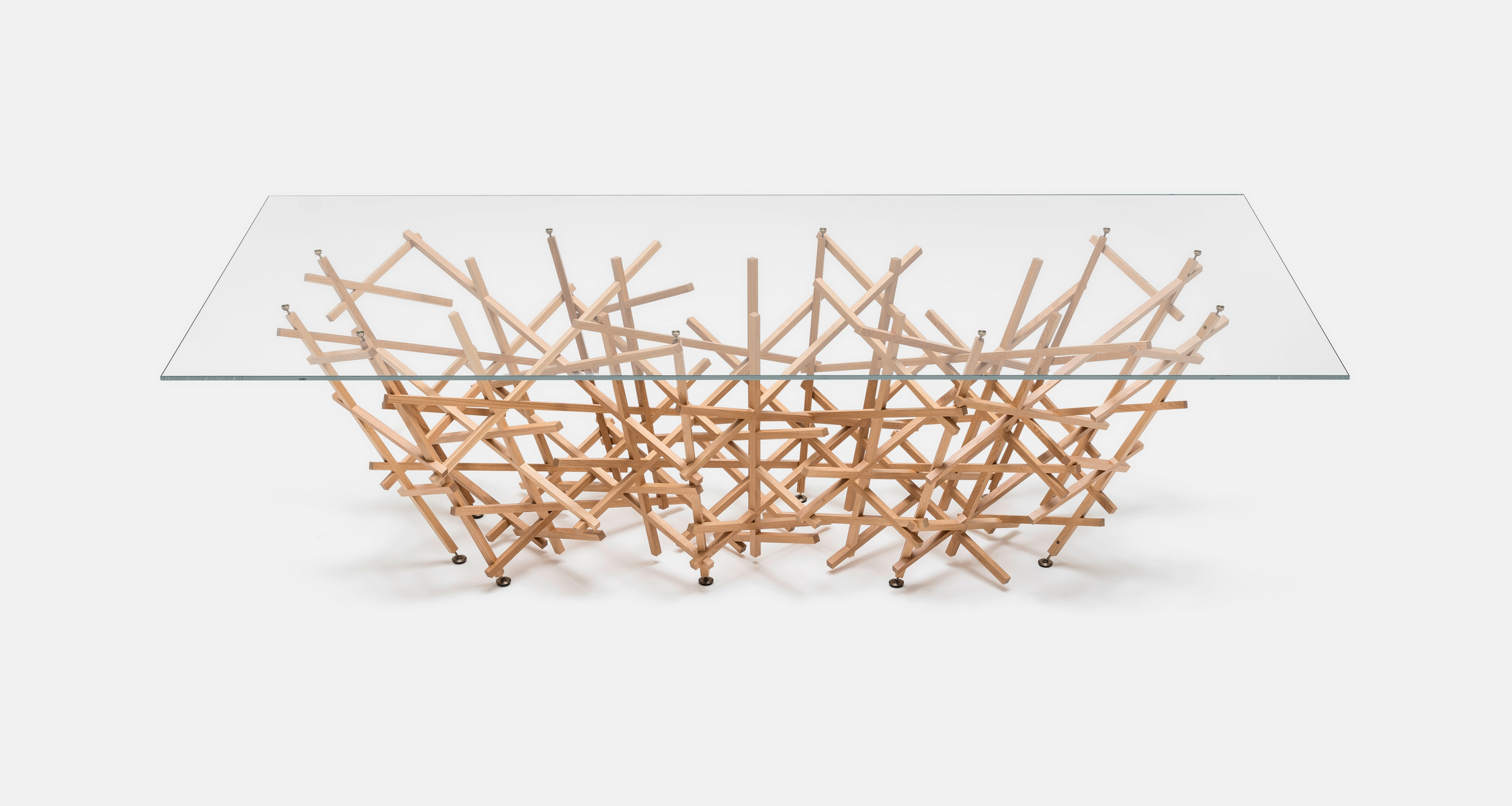
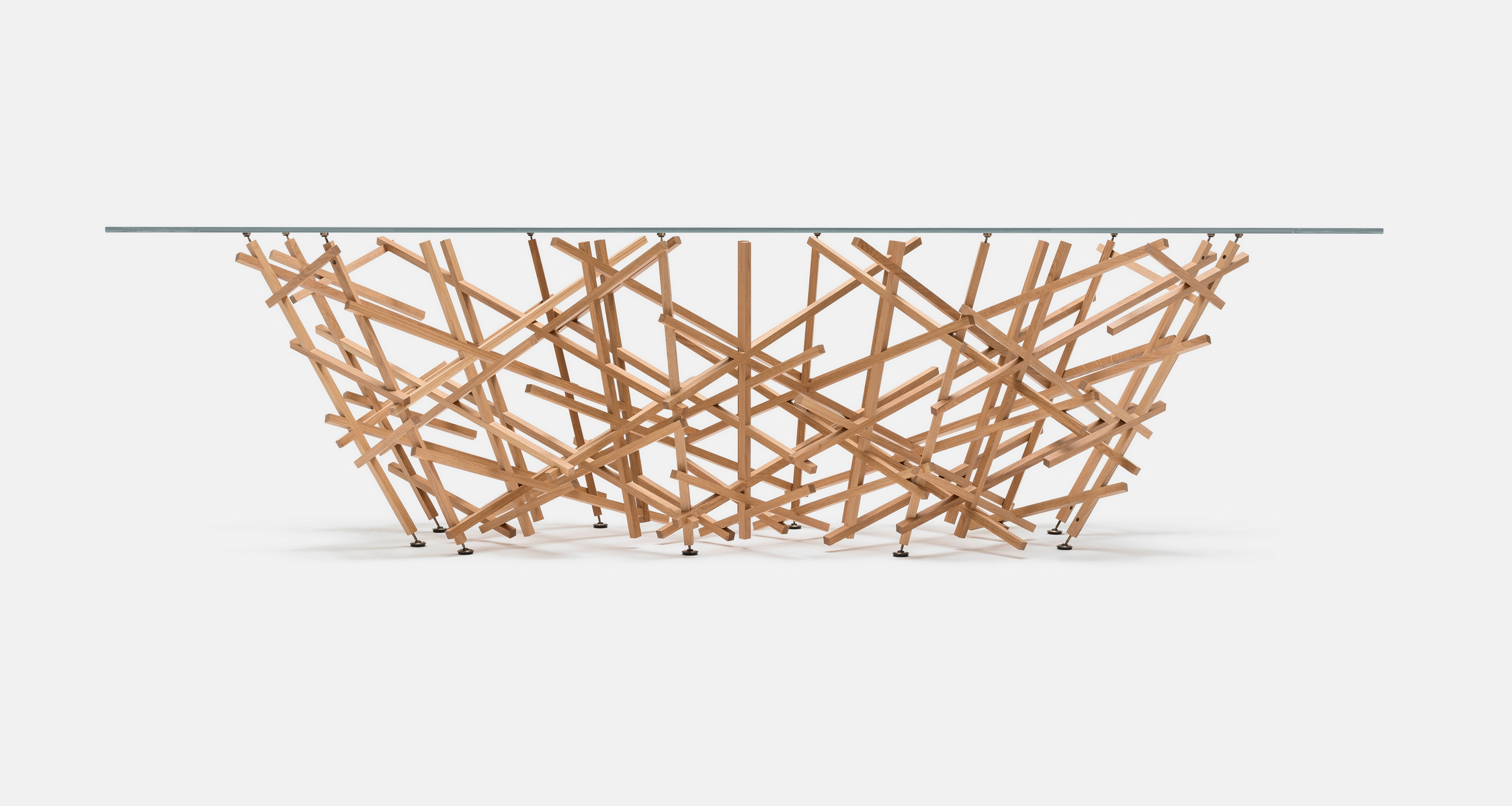
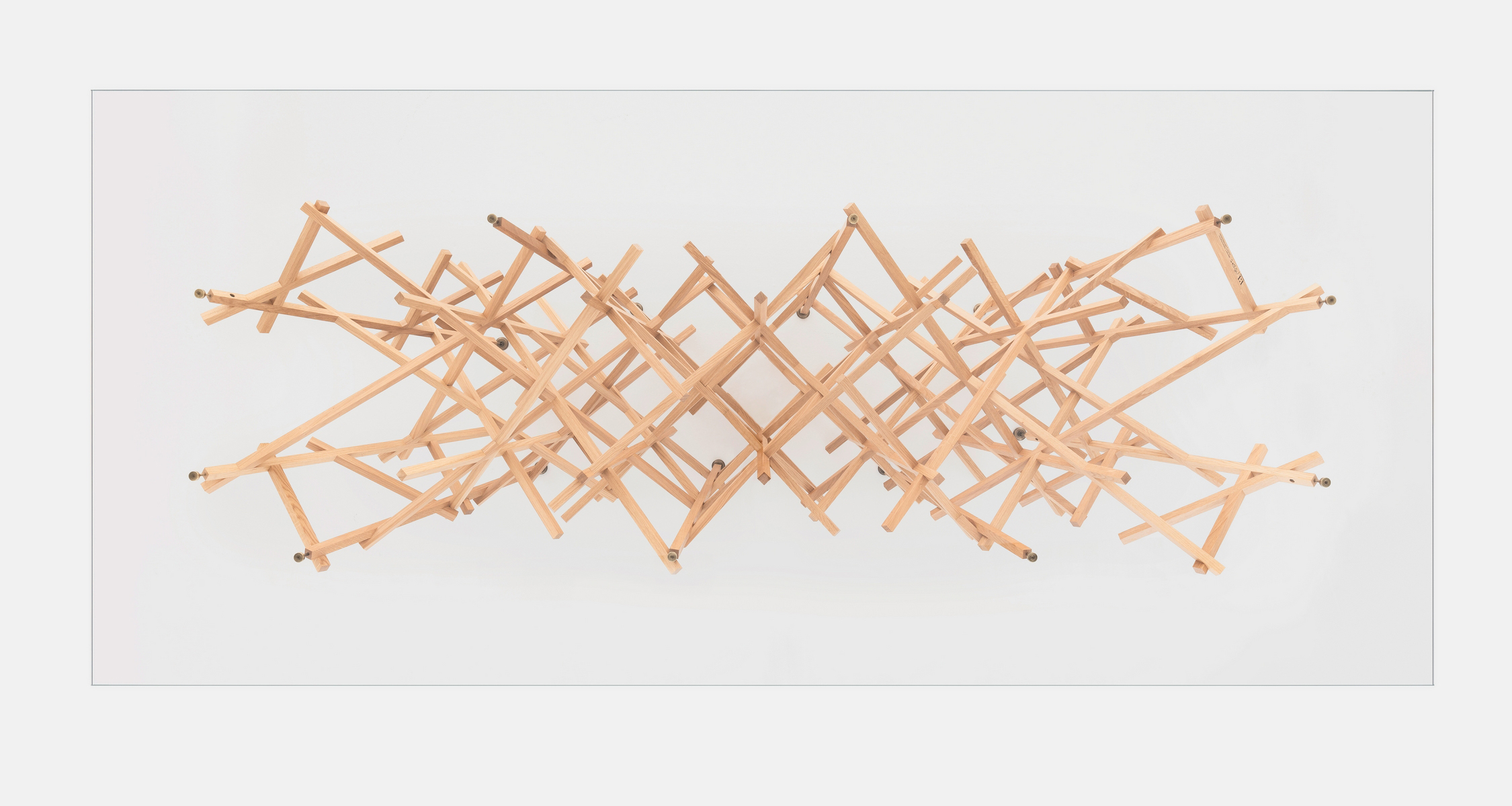

The Kigumi table will be a limited edition
furniture piece. There will only ever be 10 pieces made.
To reflect this every table will be engraved with its unique
edition number and the artist's signature.
In addition each table is accompanied by a certificate
of authenticity signed by the artist.
“For me, a table is an intensely interpersonal thing. It signifies rest, communion, nourishment, thought, and conversation, together with others and sometimes by myself.”
— Kengo Kuma
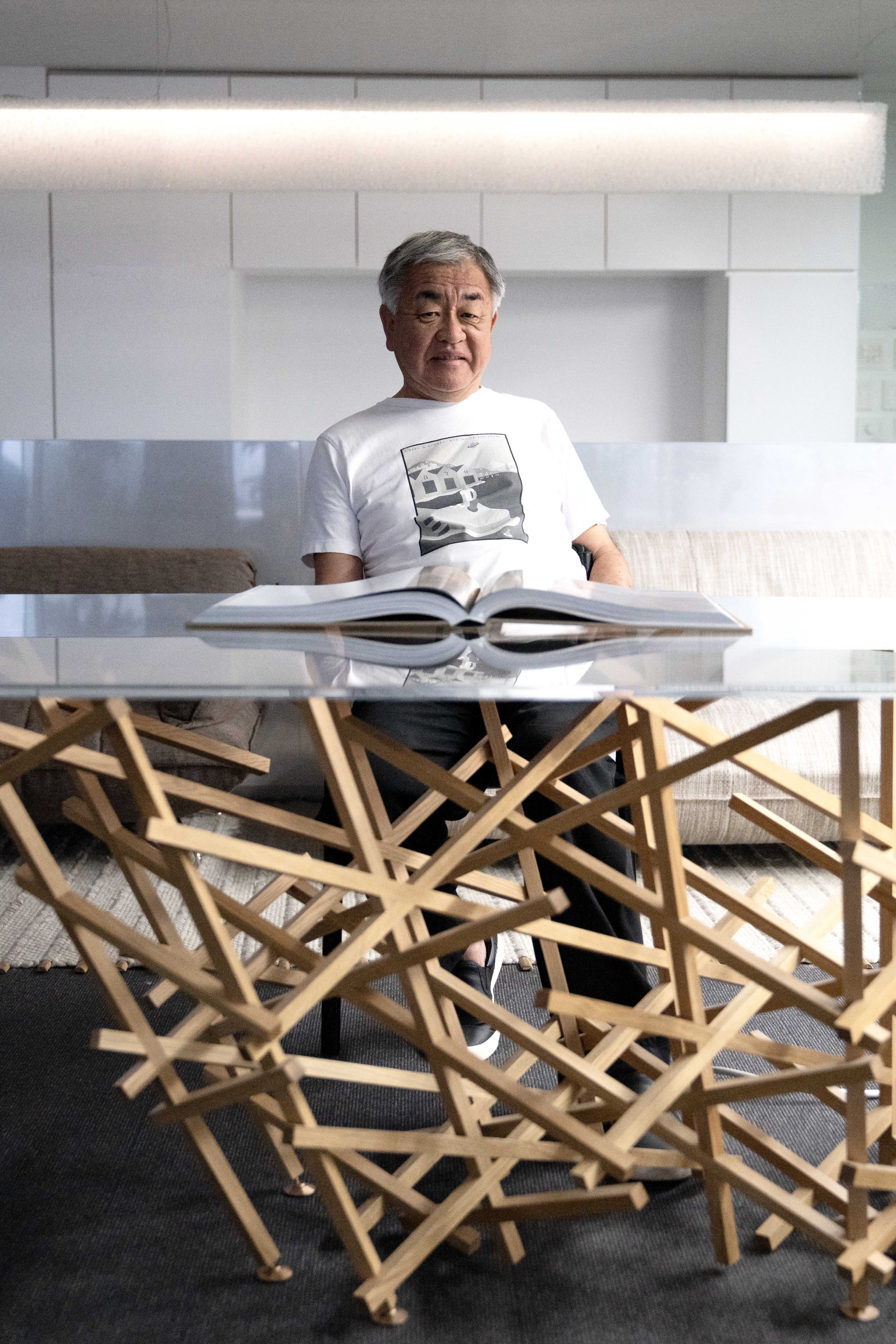
These are acts of the spirit, a kind of lightening of the soul, all fundamentally human. Our table aims to elevate the table to a level of lightness that we hope elicits surprise against convention, to bring focus to everyday acts. We try to show this by emphasizing multiple thin pieces combined into a delicate lattice, where each wooden slat measures only 20mm X 20mm. It is a "wood cloud" that supports a simple glass plane which in itself is visually light but physically not. Connection points between glass and wood narrow to machined brass components. This is a paradox of weight, aesthetics, and optics that almost seems to defy the laws of physics. Thus, we celebrate of the capacities of wood, with the characteristics and purity of the material, the modern implementation of traditional Japanese technique: we call our table "Kigumi."
This table is specially designed as a limited, made-to-order collaboration of detail and craft with our friends at Eins zu Eins, who have painstakingly realized this passion project with precision, diligence, and care: capturing the essence of what we do in our practice.

The table base is made from solid oak. The tabletop consists of a single piece of acrylic glass. (glass also possible on request). Base and tabletop are connected through specially engineered and custom made connectors in solid bronze.

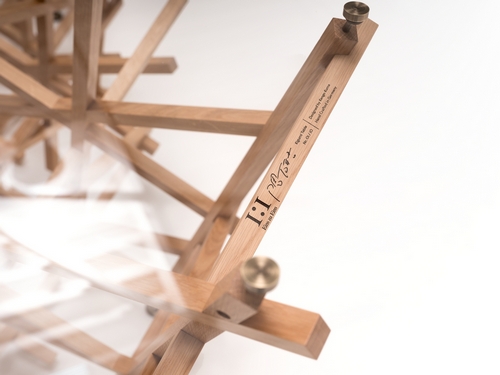
Kengo Kuma was born in 1954. He completed his master’s degree at the University of Tokyo in 1979. After studying at Columbia University as Visiting Scholar, he established Kengo Kuma & Associates 1990. In 2009, he was installed as Professor at the Graduate School of Architecture, University of Tokyo.

Among Kuma’s major works are Kirosan Observatory (1995), Water/Glass (1995, received AIA Benedictus Award), Stage in Forest, Noh Stage in the Forest (received 1997 Architectural Institute of Japan Annual Award), Bato-machi Hiroshige Museum (received The Murano Prize). His recent works include Yusuhara Wooden Bridge Museum (2010), Asakusa Culture and Tourism Center (2012), Nagaoka City Hall Aore (2012) and Ginza Kabukiza (2013). Outside Japan, Besancon Arts and Culture Center, FRAC Marseilles and Aix-en-Provence Conservatoire of Music were completed in 2013. Currently, about 100 projects are going on in Japan, Europe, USA, China and many other Asian countries. Kengo Kuma & Associates are also engaged in the designing of the new national stadium in Japan. Kuma is also a prolific writer, including Anti-Object, translated into English. Most of his latest titles have been published in English, Chinese and Korean and have won wide readership from around the world.
Read more about Kengo Kuma here.